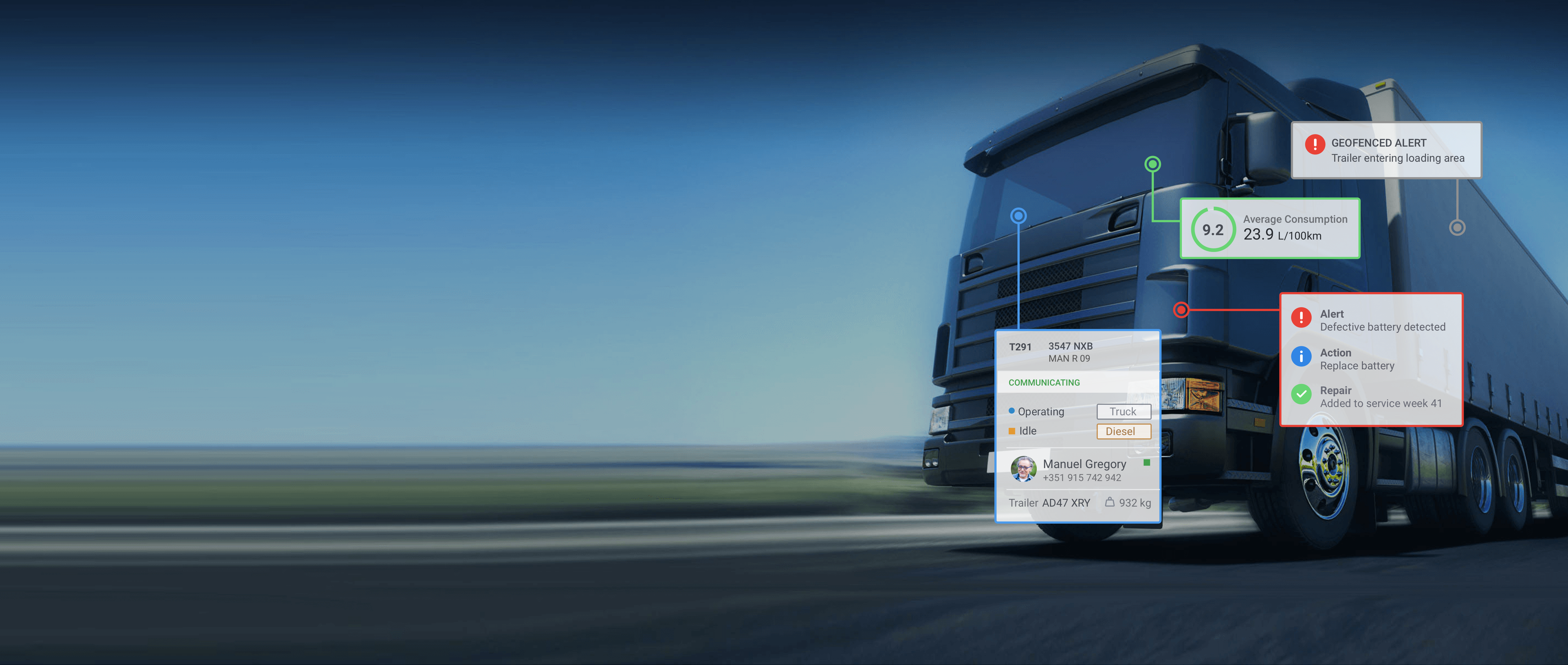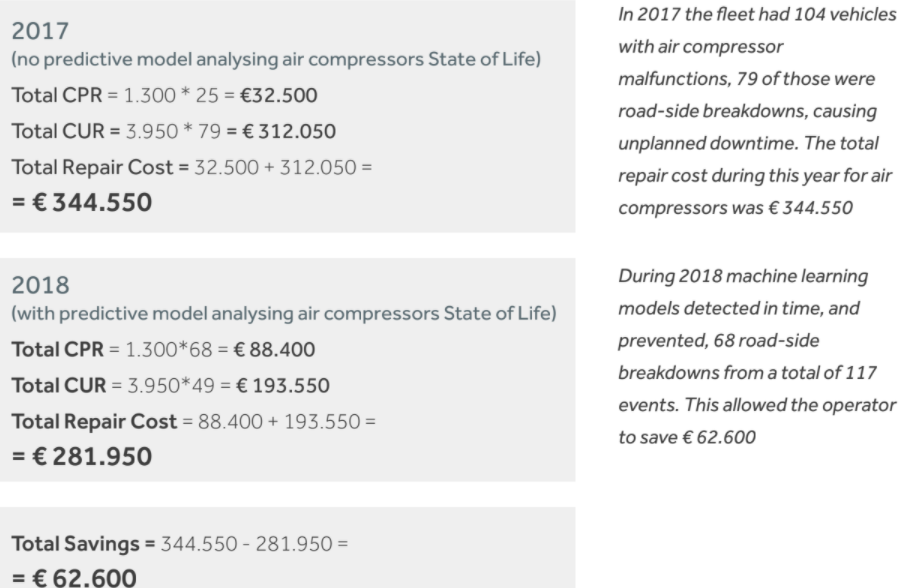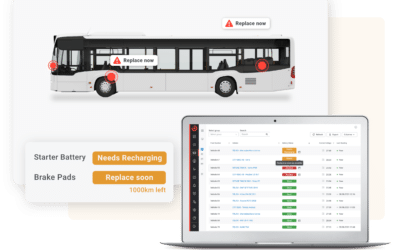Stratio sheds light into measuring the most challenging calculation impacting truck and bus operators worldwide.
Although modern fleets already budget for downtime it is generally accepted that the real costs are significantly higher than anticipated. Competitive companies and efficient fleets need to keep vehicles on the road and avoid unplanned downtime.
The ability to make a plan for it is paramount to achieve both financial success and customer satisfaction, to reduce avoidable costs and ensure people and goods arrive at their destinations without disruptions.
To achieve great customer satisfaction and solid financial goals, fleet operators need to quantify how much downtime is costing them as well as how it can be reduced.
Factors impacting vehicle downtime
At Stratio we are focused on research and innovation, constantly analyzing the factors impacting unplanned downtime. Since the very beginning, we have found out that one of the most common questions posed by the industry is actually the difficulty of quantifying the costs of these unwanted events.
To address this challenge Stratio has developed a solution to make sense of these difficult calculations by creating a bespoke formula.
This formula takes into account not only the easily quantifiable costs but also, and this is where this approach can really help truck and bus operators, the specific context of each company, one that adjusts to different industries, business models, cargos, locations, etc. To get to the bottom of this formula and its calculations we look into the two types of downtime, planned and unplanned.
Let us start with the first part of the equation, one that all operators are familiarised with and that relates with the costs linked to planned downtime and planned repairs.
In an ideal planned vehicle downtime situation, we have to take into account the costs from parts (CPpart), labour and marginal costs from other materials (i.e: cleaning items) involved in repairing a vehicle (CPwork) that has been scheduled for an intervention.
As planned component exchanges can be done together with regular maintenance, the cost of unplanned downtime (CPdowntime) is set to zero*. The Cost of Planned Repair (CPR) is therefore the starting point of our formula. To simplify it, we have CPR (Cost of Planned Repair) =CPpart + CPwork
We follow on with the second part of the equation, costs arising from unplanned repairs. In opposition to a planned downtime situation, unplanned repairs are all the interventions resulting from roadside breakdowns that cause unwanted disruption.
The major issue with unplanned repairs is that breakdowns often cause parts to get damaged beyond repair, and more components having to be replaced, than in the ideal planned situation (CUpart). Furthermore, depending on the situation, there may be additional costs associated with parts being ordered with corresponding urgency fees.
Adding to the parts, there are also higher labour costs due to more extensive and timely repairs. For operators using third party servicing urgency fees also apply. Those costs are considered in CUwork. To this point, researchers have identified that the costs of labour for unplanned repairs can represent up to the double of the cost for planned work.
Then there is the cost of unplanned downtime (CUdowntime), which in a planned repair (CUdowntime) is set to zero. This can represent one of the highest costs in our formula.
Quoting researcher Rune Prytz in his paper whilst at Volvo, “commonly at least half a day is lost immediately before the vehicle is transported to the workshop and diagnosed. After that comes waiting for spare parts. The actual repair may only take place on the third day.”
Finally, when in an unplanned repair situation, additional costs (Cextra) related to delivery delays, damaged goods and fines for late arrivals must be accounted for. These are usually not considered in the initial estimates and usually mount up to a considerable amount.
These extra costs are obviously highly dependent on the type of cargo, varying dramatically depending on the cost structure and business model of each operator. All of these factors may also be impacted by other variables such as the geographical area of the breakdown.
We designate the linear difference between planned (CPR) and unplanned repair (CUR) scenarios as the Extra Cost of Unplanned Repair (ECUR). We will use it to get to the final part of our formula.
We will now explore a practical example of this formula using a real example of how a common vehicle malfunction and unplanned repairs can affect businesses bottom line.
To exemplify the Extra Cost of Unplanned Repair (ECUR) we have selected a problem affecting fleets worldwide: air compressors, which need to be exchanged regularly throughout the year.
This example is based on a long-haul truck company of 750 vehicles in Central Europe and uses data from 2017 and 2018. During 2017, 104 trucks had to exchange the air compressor, and of those, 79 had roadside breakdowns caused by an air compressor malfunction.
Under normal circumstances, this is how much it would have cost to repair an air compressor malfunction.
Below we describe an example from the aforementioned truck company of an air compressor malfunction that occurred whilst a truck was completing a delivery.
Saving the extra costs of unplanned repair (ECUR) is even more important when we generalize the numbers for the total fleet.
Let us take into consideration that predictive maintenance makes available information about the condition of components that was previously not accessible to operators, holding the key to reduce the inefficiencies impacting unplanned repairs.
Predictive maintenance leverages on artificial intelligence and on branches of AI such as machine learning. These are mathematical models built to mimic the behaviour of human engineers (which learn and improve with experience), automating and continuously improving the analysis of very large volumes of data, which would otherwise require large teams and extensive time to go through by hand.
The case study below refers to the same long-haul truck company of 750 vehicles and their data from 2017 and 2018. The air compressor machine learning model used by Stratio initially successfully detected around 50% of all issues without false alerts. As the model kept learning its accuracy improved.
The effects of this new approach are reflected in the difference between 2017 and 2018 numbers – when machine learning was implemented to support the maintenance teams.
In regards to the example shown above, a few important notes:
• The figures were rounded up to improve readability;
• The value for labour / hour is the average for continental Europe;
• The profit is an estimate of the gains from around 50% accuracy in fault detection;
• Each company can apply their specific information and start using this formula to assess unplanned downtime costs with more precision.
No surprises. No Disruptions. Zero downtime.
If you’re interested in learning more about how we can support you and in our view for the future of maintenance, check our website and book your demo.











